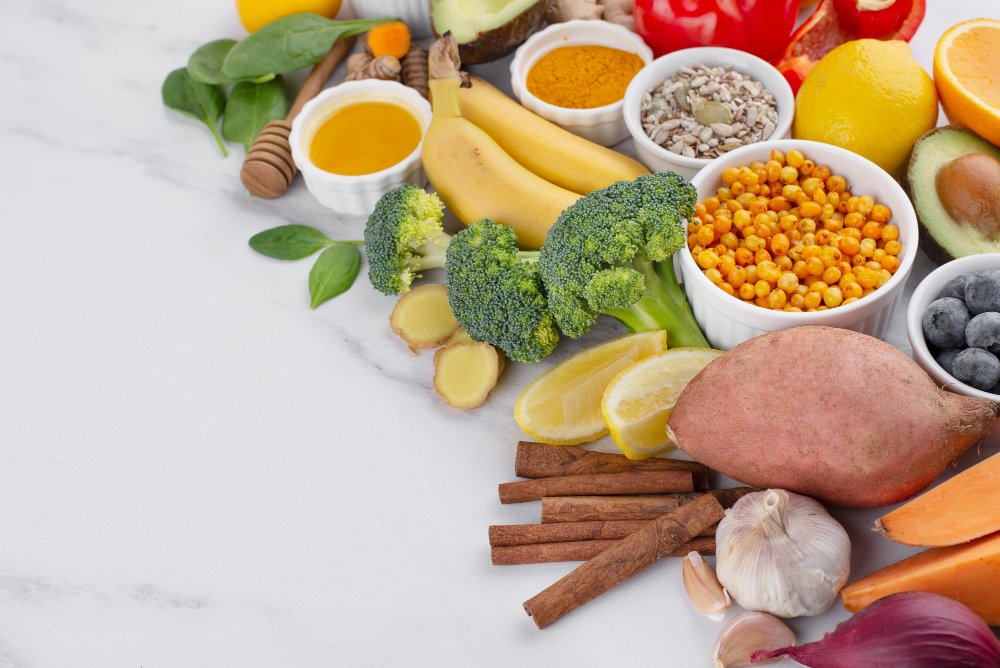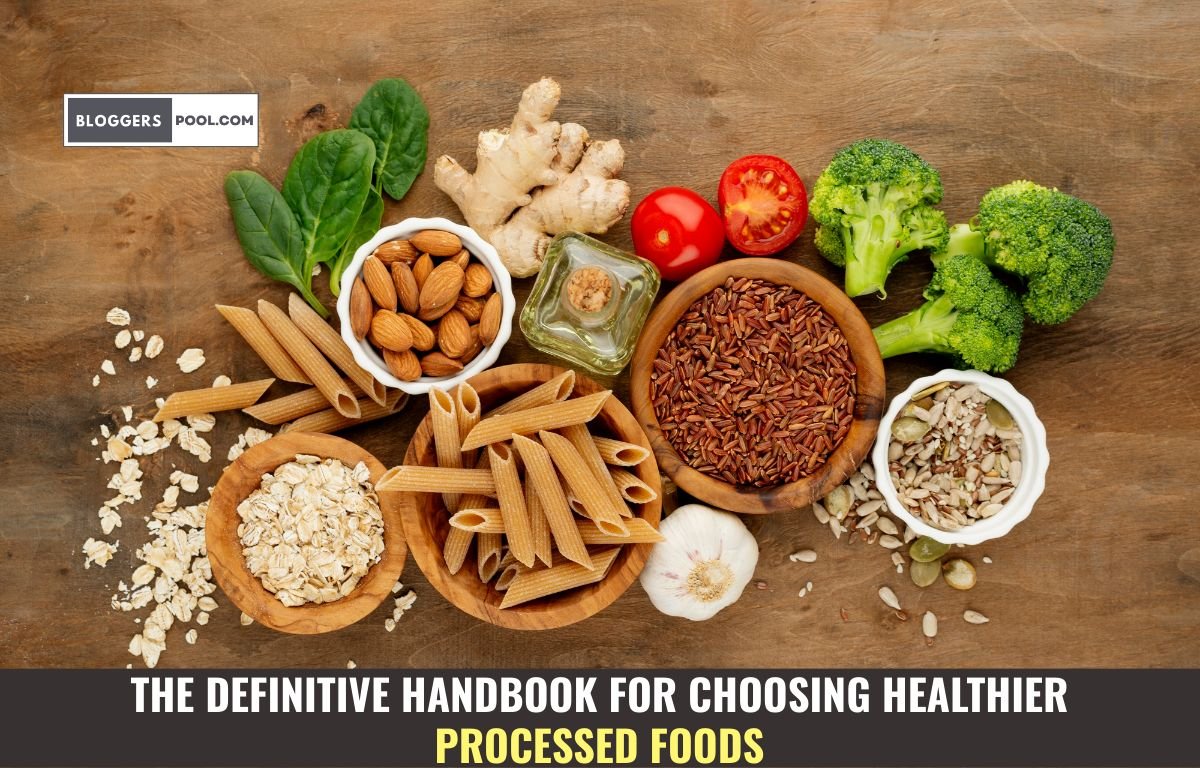The Ultimate Guide to Healthy Processed Foods
In the ever-evolving landscape of nutrition, the quest for The Definitive Handbook for Choosing Healthier Processed Foods healthy eating is paramount. We understand the importance of making informed dietary choices, and in this comprehensive guide, we delve into the realm of healthy processed foods. Our mission is to equip you with the knowledge needed to make smarter, the Definitive Handbook for Choosing Healthier Processed Foods health-conscious decisions and help you
Understanding Processed Foods

Processed Foods Demystified
Processed foods have gained notoriety over the years, often labeled as unhealthy. However, it’s crucial to recognize that not all processed foods are created equal. Our focus is on the healthy subset that can benefit your diet.
The Spectrum of Processing
Processed foods exist on a spectrum, ranging from minimally processed to heavily processed. The key lies in identifying where a product falls on this spectrum, as it greatly influences its nutritional value.
Minimally Processed: These foods undergo minimal alteration, such as washing, chopping, or freezing. Examples include bagged salads, frozen fruits, and canned vegetables.
Moderately Processed: These foods might have undergone cooking or baking but retain most of their original nutritional value. Think of whole-grain pasta, canned beans, or yogurt.
Heavily Processed: These foods undergo extensive modification, often involving the addition of preservatives, sweeteners, and artificial flavors. This category includes sugary snacks, ready-to-eat meals, and sugary cereals.
The Benefits of Healthy Processed Foods
Nutritional Enhancement
Healthy processed foods can be fortified with essential nutrients, making them a convenient source of vitamins and minerals. For instance, fortified breakfast cereals often contain added iron, folic acid, and vitamins.
Improved Shelf Life
Processing can extend the shelf life of foods, reducing waste and making it easier to incorporate nutritious options into your diet.
Convenience and Accessibility
In our fast-paced lives, convenience is key. Healthy processed foods offer a quick and accessible way to meet your nutritional needs, even on busy days.
Key Considerations When Choosing Healthy Processed Foods
Read the Label
To make informed choices, always read the nutrition label. Look for products with minimal added sugars, sodium, and unhealthy fats. It’s crucial to be mindful of serving sizes too.
Check the Ingredients
The ingredient list reveals a lot about a product. Opt for those with a shorter list of recognizable, whole-food ingredients.
Consider Dietary Restrictions
If you have dietary restrictions or preferences, such as gluten-free or vegan, look for products that cater to your needs. The market is full of options for various dietary lifestyles.
A Sample Day of Healthy Processed Foods
This meal plan combines minimally and moderately processed foods, ensuring a balanced and nutritious day.
The Impact of Healthy Processed Foods on Your Well-being
Understanding the impact of healthy processed foods on your well-being is essential to appreciate their role in your overall health. Let’s explore the benefits they bring to the table in more detail.
Weight Management and Control
Healthy processed foods can play a pivotal role in weight management and control. They often come in pre-portioned sizes, making it easier to keep track of your calorie intake. Moreover, they are less likely to lead to overeating compared to highly processed, calorie-dense snacks.
Heart Health
For individuals concerned about heart health, choosing the right processed foods is crucial. Many healthy processed options are designed to be low in saturated fats and trans fats, which are known to contribute to heart disease. Look for products labeled as “heart-healthy” or those that promote low cholesterol levels.
Fiber Intake
Fiber is an essential component of a balanced diet, contributing to digestive health and satiety. Healthy processed foods often contain whole grains and fiber-rich ingredients. Incorporating them into your diet can help you meet your daily fiber requirements more easily.
Convenience without Compromise
One of the most significant advantages of healthy processed foods is the convenience they offer without compromising your health goals. In a world where time is often limited, having quick, nutritious options at your disposal can make a significant difference in maintaining a balanced diet.
Sustainable Choices
As the world becomes more environmentally conscious, it’s worth noting that some healthy processed foods are produced with sustainability in mind. Look for products that prioritize eco-friendly packaging, responsible sourcing, and minimal food waste to contribute positively to the planet while nourishing your body.
A Balanced Approach
Incorporating healthy processed foods into your diet doesn’t mean giving up fresh, whole foods. Instead, it’s about achieving a balanced approach to nutrition. Combining these options with fruits, vegetables, lean proteins, and plenty of water ensures that you’re covering all your nutritional bases.
Recipe Ideas
To further enhance your understanding and usage of healthy processed foods, here are some recipe ideas to inspire your culinary adventures:
1. Whole-Grain Pasta Salad
Ingredients:
- Whole-grain pasta
- Cherry tomatoes
- Spinach
- Black olives
- Feta cheese
- Balsamic vinaigrette
2. Frozen Fruit Smoothie
Ingredients:
- Frozen mixed berries
- Greek yogurt
- Honey
- Almond milk
3. Veggie Burgers
Ingredients:
- Plant-based burger patties
- Whole-grain buns
- Lettuce, tomato, and onion
- Avocado spread
These recipes showcase the versatility of healthy processed foods and how they can be integrated into delicious, nutritious meals.
Navigating the Marketplace
To make the most of your journey towards a healthier lifestyle with processed foods, it’s essential to navigate the marketplace wisely. Here are some expert tips to help you make savvy choices:
1. Research and Compare Brands
Not all brands are created equal when it comes to the quality of their processed foods. Invest the effort in conducting research and making comparisons between various brands. Look for those with a reputation for using high-quality ingredients and ethical production methods.
2. Watch for Hidden Additives
While many healthy processed foods offer great nutritional value, some may still contain hidden additives or excessive salt and sugar. Always scrutinize ingredient lists and nutrition labels to ensure you’re making the healthiest choice.
3. Explore Local and Artisanal Options
Local and artisanal producers often prioritize quality and sustainability. Explore your local farmers’ markets and specialty stores for unique, healthy processed food options that may not be available in larger supermarket chains.
4. Seek Certification Labels
Certification labels like “Organic,” “Non-GMO,” and “Fair Trade” can be indicators of quality and ethical production. Look for these labels on packaging to make more informed choices.
5. Consider Packaging and Sustainability
The packaging of processed foods matters. Opt for products that use eco-friendly or recyclable packaging materials, contributing to a more sustainable environment.
6. Explore International Cuisines
Diversity in your diet is key to good health. Explore international cuisines that incorporate healthy processed foods unique to their culture. This can add excitement and variety to your meals.
7. Stay Informed and Adapt
The world of healthy processed foods is continually evolving. Stay informed about the latest trends, innovations, and product launches. Be willing to adapt your choices to incorporate new and healthier options as they become available.
Embracing a Healthier Future
Incorporating healthy processed foods into your diet doesn’t just improve your personal well-being; it contributes to a broader movement towards healthier eating practices worldwide. By making smart choices, supporting ethical producers, and sharing your knowledge with others, you’re playing a crucial role in reshaping the way we approach nutrition.
In closing, the journey towards outranking the competition in the realm of healthy processed foods is an exciting and rewarding one. Armed with knowledge, a discerning eye, and a taste for culinary adventure, you have the power to transform your diet and inspire those around you to embrace a healthier future. So, go forth and explore the world of healthy processed foods with confidence, and watch as your well-being flourishes.
Conclusion
In the pursuit of a healthier lifestyle, understanding and embracing healthy processed foods can be a game-changer. By making informed choices, reading labels, and considering your dietary needs, you can enjoy the convenience and benefits of these foods while maintaining your health goals.
Remember, it’s not about avoiding all processed foods but about selecting the right ones. With this guide, we’ve provided you with the knowledge to make those choices, ensuring that you’re on the path to a healthier you. Outranking the competition begins with being well-informed, and we’ve got you covered.
Final Thoughts
In conclusion, healthy The Definitive Handbook for Choosing Healthier Processed Foods have a well-deserved place in a balanced diet. They offer convenience, nutritional value, and the potential to support your health and well-being. By making informed choices, considering your dietary needs, and incorporating them into a diverse and balanced diet, you can confidently enjoy the benefits of healthy processed foods while aiming to outrank the competition in your pursuit of a healthier lifestyle.

1 thought on “The Definitive Handbook for Choosing Healthier Processed Foods”